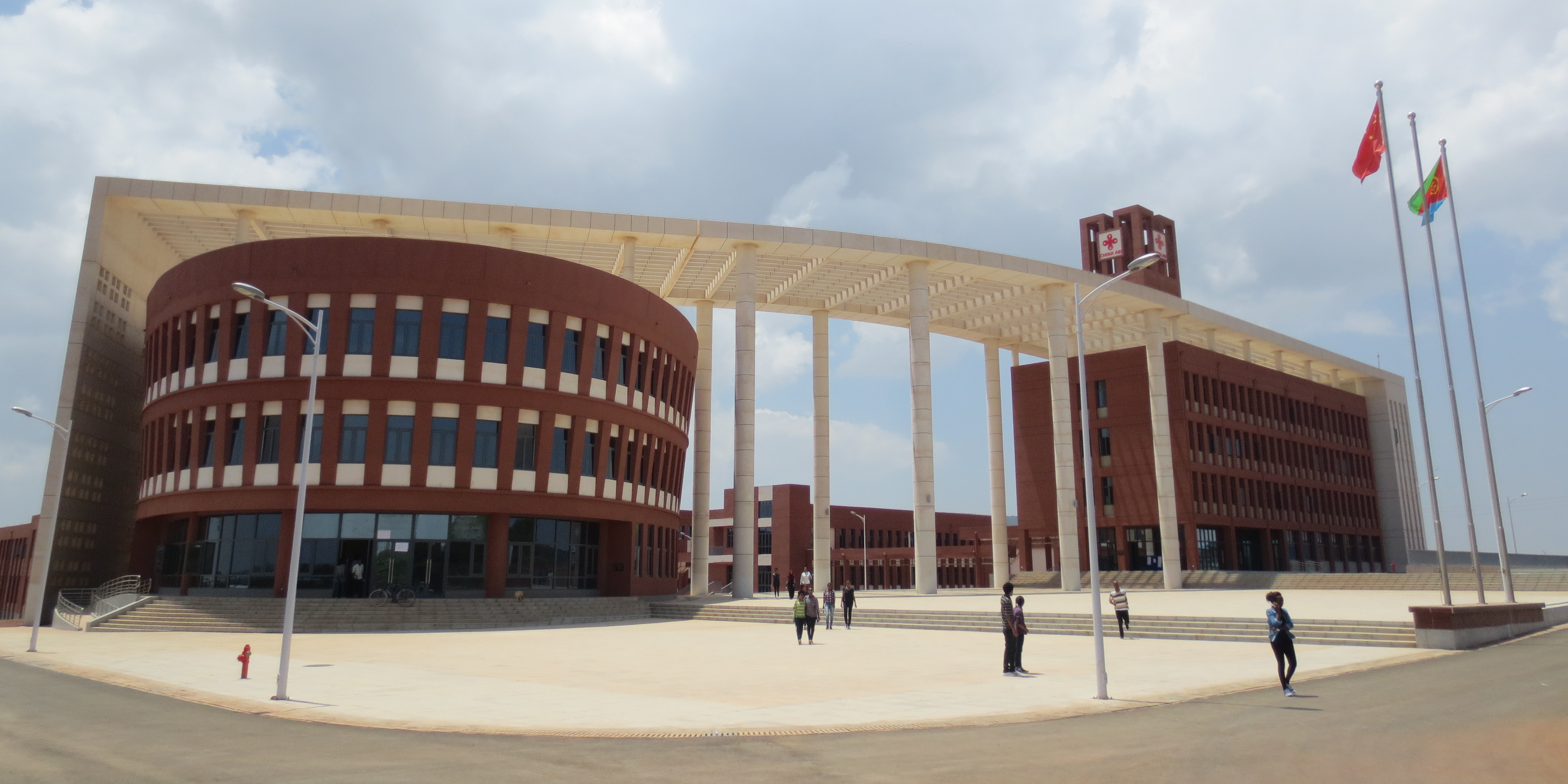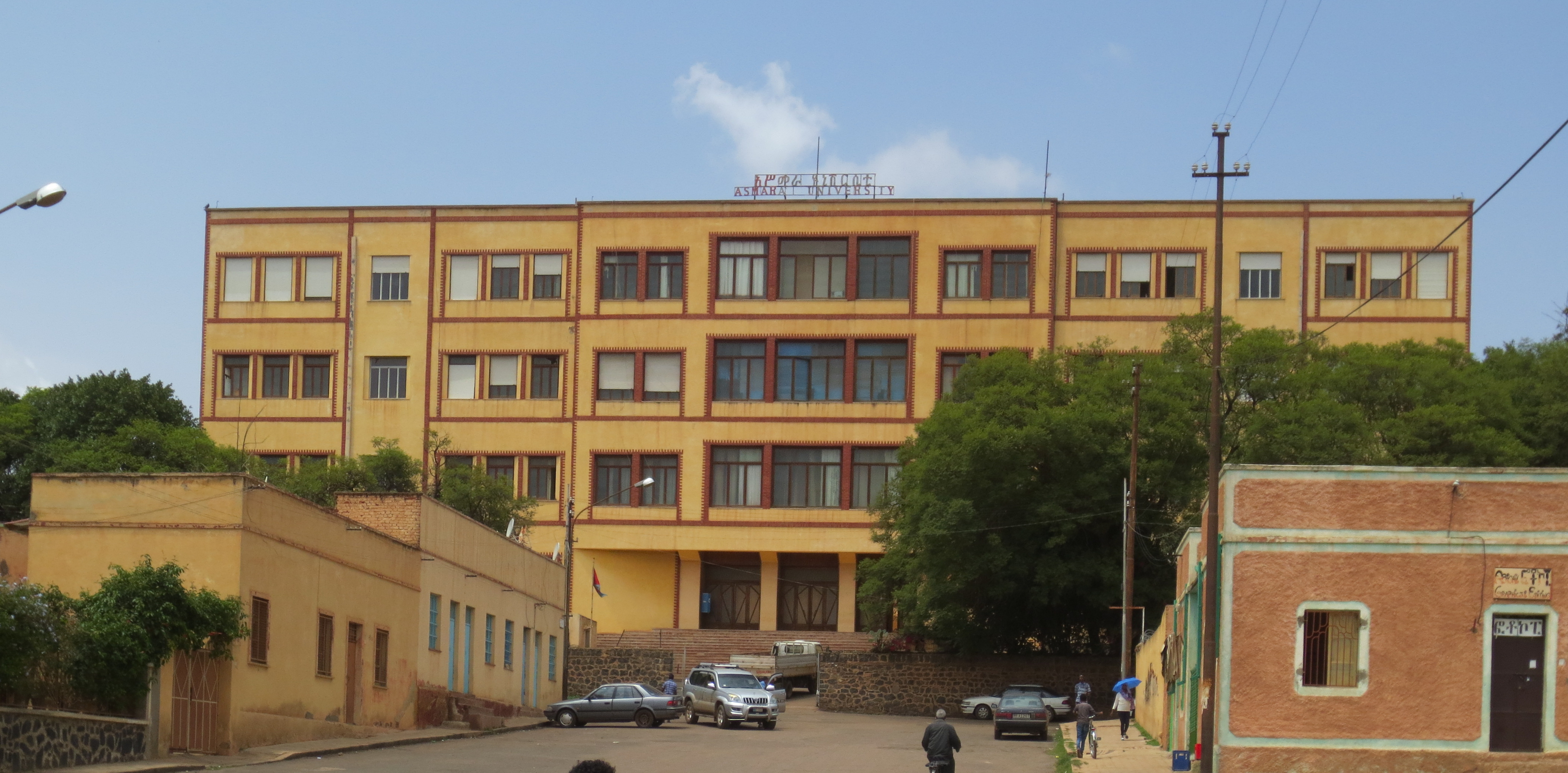|
Eritrea Institute Of Technology
The Eritrea Institute of Technology (EIT) or Mai-Nefhi College is a technological institute located near the town Himbrti, Mai Nefhi, Eritrea. It is situated about 12 km southwest of Asmara, near the Mai Nefhi dam. The institute has three colleges: Science, Engineering and Technology, and Education. The institute began with about 5,500 students during the 2003-2004 academic year. Overview The EIT was opened after the University of Asmara The University of Asmara (UoA) was a public university in Asmara, Eritrea. The nation's first university, it was founded in 1958 by the "Piae Madres Nigritiae" ( Comboni Sisters). The school was meant to provide for the local population, though ... was reorganized. According to the Ministry of Education, the institution was established, as one of many efforts to achieve equal distribution of higher learning in areas outside the capital city, Asmara. Accordingly, several similar colleges are also established in different other parts of t ... [...More Info...] [...Related Items...] OR: [Wikipedia] [Google] [Baidu] |
Public University
A public university or public college is a university or college that is in owned by the state or receives significant public funds through a national or subnational government, as opposed to a private university. Whether a national university is considered public varies from one country (or region) to another, largely depending on the specific education landscape. Africa Egypt In Egypt, Al-Azhar University was founded in 970 AD as a madrasa; it formally became a public university in 1961 and is one of the oldest institutions of higher education in the world. In the 20th century, Egypt opened many other public universities with government-subsidized tuition fees, including Cairo University in 1908, Alexandria University in 1912, Assiut University in 1928, Ain Shams University in 1957, Helwan University in 1959, Beni-Suef University in 1963, Zagazig University in 1974, Benha University in 1976, and Suez Canal University in 1989. Kenya In Kenya, the Ministry of Ed ... [...More Info...] [...Related Items...] OR: [Wikipedia] [Google] [Baidu] |
Eritrea
Eritrea ( ; ti, ኤርትራ, Ertra, ; ar, إرتريا, ʾIritriyā), officially the State of Eritrea, is a country in the Horn of Africa region of Eastern Africa, with its capital and largest city at Asmara. It is bordered by Ethiopia in the south, Sudan in the west, and Djibouti in the southeast. The northeastern and eastern parts of Eritrea have an extensive coastline along the Red Sea. The nation has a total area of approximately , and includes the Dahlak Archipelago and several of the Hanish Islands. Human remains found in Eritrea have been dated to 1 million years old and anthropological research indicates that the area may contain significant records related to the evolution of humans. Contemporary Eritrea is a multi-ethnic country with nine recognised ethnic groups. Nine different languages are spoken by the nine recognised ethnic groups, the most widely spoken language being Tigrinya, the others being Tigre, Saho, Kunama, Nara, Afar, Beja, Bilen and Ar ... [...More Info...] [...Related Items...] OR: [Wikipedia] [Google] [Baidu] |
Mai Nefhi
Mai Nefhi (Tigrigna language, Tigrigna for "Water-Distend?") is both a location near Asmara, Eritrea and the dam after which it was named. The Mai Nefhi dam was completed in 1970, during the reign of Haile Selassie, and remains the main water source for Asmara. Abardae a town with a population of 3000 residents is located nearby. Eritrea Institute of Technology, the only technical college in the country is located 500m away from Abardae-Mai Nefhi. References Asmara Buildings and structures in Asmara Dams in Eritrea {{Africa-dam-stub ... [...More Info...] [...Related Items...] OR: [Wikipedia] [Google] [Baidu] |
Asmara
Asmara ( ), or Asmera, is the capital and most populous city of Eritrea, in the country's Central Region. It sits at an elevation of , making it the sixth highest capital in the world by altitude and the second highest capital in Africa. The city is located at the tip of an escarpment that is both the northwestern edge of the Eritrean Highlands and the Great Rift Valley in neighbouring Ethiopia. In 2017, the city was declared as a UNESCO World Heritage Site for its well-preserved modernist architecture. The site of Asmera was first settled in 800 BC with a population ranging from 100 to 1,000. The city was then founded in the 12th century AD after four separate villages unified to live together peacefully after long periods of conflict. Under Italian rule the city of Asmara was made capital of Eritrea in the last years of the 19th century. History Giving the Pre-Axumite archaeological evidence found in Asmara around Sembel Called the Ona culture, Asmara's history go back to 8 ... [...More Info...] [...Related Items...] OR: [Wikipedia] [Google] [Baidu] |
Science
Science is a systematic endeavor that builds and organizes knowledge in the form of testable explanations and predictions about the universe. Science may be as old as the human species, and some of the earliest archeological evidence for scientific reasoning is tens of thousands of years old. The earliest written records in the history of science come from Ancient Egypt and Mesopotamia in around 3000 to 1200 BCE. Their contributions to mathematics, astronomy, and medicine entered and shaped Greek natural philosophy of classical antiquity, whereby formal attempts were made to provide explanations of events in the physical world based on natural causes. After the fall of the Western Roman Empire, knowledge of Greek conceptions of the world deteriorated in Western Europe during the early centuries (400 to 1000 CE) of the Middle Ages, but was preserved in the Muslim world during the Islamic Golden Age and later by the efforts of Byzantine Greek scholars who brought Greek ... [...More Info...] [...Related Items...] OR: [Wikipedia] [Google] [Baidu] |
Engineering
Engineering is the use of scientific method, scientific principles to design and build machines, structures, and other items, including bridges, tunnels, roads, vehicles, and buildings. The discipline of engineering encompasses a broad range of more specialized List of engineering branches, fields of engineering, each with a more specific emphasis on particular areas of applied mathematics, applied science, and types of application. See glossary of engineering. The term ''engineering'' is derived from the Latin ''ingenium'', meaning "cleverness" and ''ingeniare'', meaning "to contrive, devise". Definition The American Engineers' Council for Professional Development (ECPD, the predecessor of Accreditation Board for Engineering and Technology, ABET) has defined "engineering" as: The creative application of scientific principles to design or develop structures, machines, apparatus, or manufacturing processes, or works utilizing them singly or in combination; or to construct o ... [...More Info...] [...Related Items...] OR: [Wikipedia] [Google] [Baidu] |
Technology
Technology is the application of knowledge to reach practical goals in a specifiable and reproducible way. The word ''technology'' may also mean the product of such an endeavor. The use of technology is widely prevalent in medicine, science, industry, communication, transportation, and daily life. Technologies include physical objects like utensils or machines and intangible tools such as software. Many technological advancements have led to societal changes. The earliest known technology is the stone tool, used in the prehistoric era, followed by fire use, which contributed to the growth of the human brain and the development of language in the Ice Age. The invention of the wheel in the Bronze Age enabled wider travel and the creation of more complex machines. Recent technological developments, including the printing press, the telephone, and the Internet have lowered communication barriers and ushered in the knowledge economy. While technology contributes to econom ... [...More Info...] [...Related Items...] OR: [Wikipedia] [Google] [Baidu] |
Education
Education is a purposeful activity directed at achieving certain aims, such as transmitting knowledge or fostering skills and character traits. These aims may include the development of understanding, rationality, kindness, and honesty. Various researchers emphasize the role of critical thinking in order to distinguish education from indoctrination. Some theorists require that education results in an improvement of the student while others prefer a value-neutral definition of the term. In a slightly different sense, education may also refer, not to the process, but to the product of this process: the mental states and dispositions possessed by educated people. Education originated as the transmission of cultural heritage from one generation to the next. Today, educational goals increasingly encompass new ideas such as the liberation of learners, skills needed for modern society, empathy, and complex vocational skills. Types of education are commonly divided into formal ... [...More Info...] [...Related Items...] OR: [Wikipedia] [Google] [Baidu] |
Academic Year
An academic year or school year is a period of time which schools, colleges and universities use to measure a quantity of study. School holiday School holidays (also referred to as vacations, breaks, and recess) are the periods during which schools are closed or no classes or other mandatory activities are held. The dates and periods of school holidays vary considerably throughout the world, and there is usually some variation even within the same jurisdiction. Governments often legislate on the total number of school days for state schools. The holidays given below apply to primary and secondary education. Teaching sessions (terms or semesters) in tertiary education are usually longer. Terminology Spring vacation In countries with a Christian religious tradition, the Easter holiday, which in the United States is sometimes known as spring break, is a holiday that takes place in the northern spring. The date varies mainly because Easter is a movable feast, but also by countr ... [...More Info...] [...Related Items...] OR: [Wikipedia] [Google] [Baidu] |
University Of Asmara
The University of Asmara (UoA) was a public university in Asmara, Eritrea. The nation's first university, it was founded in 1958 by the "Piae Madres Nigritiae" ( Comboni Sisters). The school was meant to provide for the local population, though its initial enrollment in the 1950s was entirely Italian. Over the course of its history it has been reopened and reorganised following political changes. In 2006 it was closed and reorganized into other institutions such as the Eritrea Institute of Technology. History The university was founded as the "''Catholic College of Santa Famiglia''" in 1958 by the "Piae Madres Nigritiae" ( Comboni Sisters). In 1964 the university had been renamed as "University of Asmara" and began offering Associate Diploma programs in the arts, commerce, and the sciences. The roots of the university are connected to the 1940s when Dr. Vincenzo Di Meglio promoted the creation of the "School of Medicine" in Italian Asmara. It is also linked historically to the ... [...More Info...] [...Related Items...] OR: [Wikipedia] [Google] [Baidu] |
Universities And Colleges In Eritrea
A university () is an educational institution, institution of higher education, higher (or Tertiary education, tertiary) education and research which awards academic degrees in several Discipline (academia), academic disciplines. ''University'' is derived from the Latin phrase ''universitas magistrorum et scholarium'', which roughly means "community of teachers and scholars". Universities typically offer both undergraduate education, undergraduate and postgraduate education, postgraduate programs. The first universities in Europe were established by Catholic Church monks. The University of Bologna (), Italy, which was founded in 1088, is the first university in the sense of: *being a high degree-awarding institute. *using the word ''universitas'' (which was coined at its foundation). *having independence from the ecclesiastic schools and issuing secular as well as non-secular degrees (with teaching conducted by both clergy and non-clergy): grammar, rhetoric, logic, theology, can ... [...More Info...] [...Related Items...] OR: [Wikipedia] [Google] [Baidu] |


.jpg)





